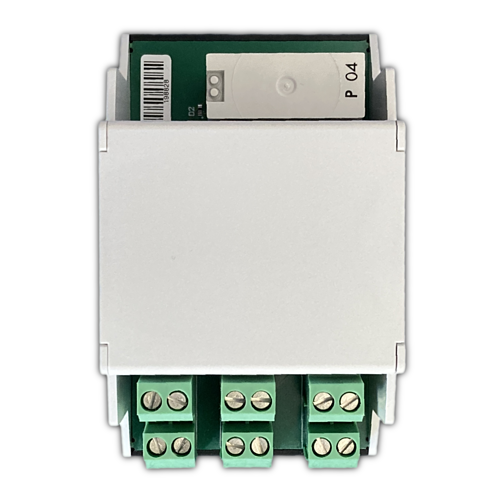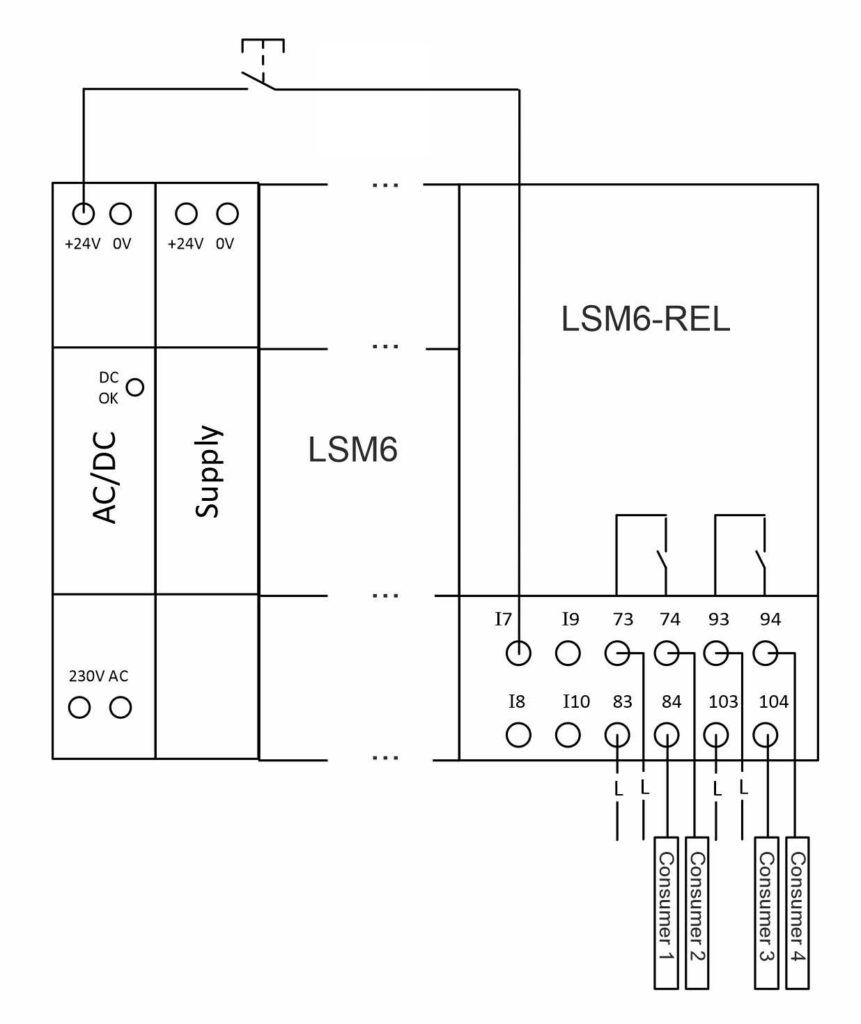
The LSM6-REL is a configurable digital input and output device used as an extension for the light scene module LSM6 or LSM6-K (referred to as LSM6 below). It expands the LSM6 as the main device by 4 digital inputs and outputs each. The potential-free digital outputs are power relays for switching loads, such as electronic ballasts (EB), power supplies, or motors. The power supply and communication with the main device LSM6 are carried out via the H-BUS, which is located on the back in the area of the DIN rail.
The specific function of the inputs and outputs can be easily configured using the Protronic multifunction tool (MFT) in conjunction with the Protronic light control system LSM6 for DALI electronic ballasts. The MFT is available as a free download on the website https://mft.protronic-gmbh.com/ and can be used both online and offline.
Features
Applications
Connection assignment/wiring diagramm
Digital inputs – DC 24V, GND
| PIN | Labelling on LSM6-REL | Assignment |
| 1 | I7 | Digital input 1 |
| 2 | I8 | Digital input 2 |
| 3 | I9 | Digital input 3 |
| 4 | I10 | Digital input 4 |
Digital output – Relays, potential-free contacts
| PIN | Labelling on LSM6-REL | Assignment |
| 5 | 73 | Digital output 1 |
| 7 | 74 | Digital output 1 |
| 6 | 83 | Digital output 2 |
| 8 | 84 | Digital output 2 |
| 9 | 93 | Digital output 3 |
| 11 | 94 | Digital output 3 |
| 10 | 103 | Digital output 4 |
| 12 | 104 | Digital output 4 |


